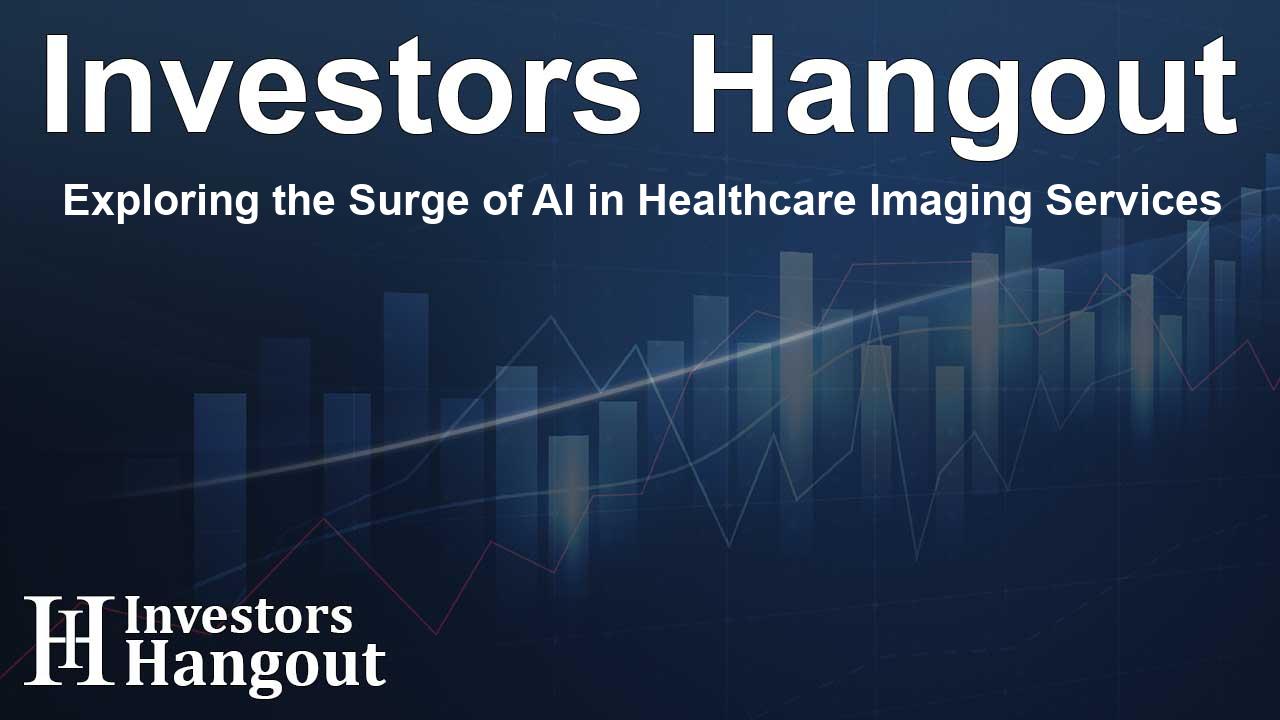Exploring the Surge of AI in Healthcare Imaging Services

Computer Vision's Transformation in Healthcare
The computer vision market within healthcare is poised for substantial growth, anticipated to soar to USD 49 billion, driven largely by the advancements in artificial intelligence (AI). Currently valued at about USD 1.4 billion, this sector is expanding at an impressive CAGR of 47.8%. These strides forward are significantly enhancing diagnostic precision and operational efficiency.
Understanding the Market Dynamics
The intersection of AI technologies and healthcare imaging is reshaping how diagnostics are conducted. Today, rising demands for precise diagnostic tools are met by innovative computer vision applications, which apply AI to interpret medical images swiftly and accurately. This technological integration is increasingly essential as healthcare providers grapple with staff shortages and an influx of patients requiring attention.
Integration of AI Technologies
The adoption of AI-driven systems is not merely a trend; it’s an essential adaptation to modern challenges. As traditional methods struggle under the weight of increasing demand, AI solutions are emerging to fill that gap. These technologies offer faster and more accurate diagnostics, making them indispensable in modern medical practices.
Advancements in Hardware and Software
Continuous improvements in hardware and software components are crucial to the robust growth of this market. The expansion is supported by a keen focus on wearable healthcare technologies and the increasing reliance on advanced imaging systems that leverage AI capabilities for enhanced performance.
Key Companies and Their Contributions
A range of players are making significant strides in the computer vision landscape within healthcare. Notable companies include NVIDIA Corporation, Microsoft, and Google LLC. Their contributions are pivotal as they introduce cutting-edge technologies, set the pace for innovation, and implement solutions that enhance diagnostic accuracy and improve patient outcomes.
Hardware's Dominance in Market Segmentation
In terms of segments, hardware presently leads the market with over 45% share, primarily due to the rising demand for sophisticated imaging devices and sensors. MRI, CT scans, and X-rays are heavily reliant on these components, contributing to market expansion.
Regional Growth Trends
The North American region currently represents the largest portion of the computer vision market due to its advanced healthcare infrastructure and notable investments in research and development. Companies like GE Healthcare and IBM Watson Health are at the forefront of this technological adoption, particularly in oncology and radiology where early detection of diseases is paramount.
Rapidly Growing Asia-Pacific Sector
The Asia-Pacific region is expected to experience the fastest growth, as countries like China and India rapidly embrace AI-driven solutions to further their healthcare initiatives. These solutions are even aiding rural healthcare delivery, significantly enhancing access to healthcare services and bridging existing gaps.
Recent Innovations in Computer Vision
The market is witnessing continuous innovations with companies launching new solutions to enhance diagnostic capabilities. For instance, Caregility Corporation's recently introduced edge-based AI solution demonstrates the potential of reducing reliance on cloud processing while maintaining high performance in diagnostic services.
Key Takeaways and Future Outlook
The overall trajectory of the computer vision market in healthcare appears promising. With expectations to reach USD 49 billion by 2032, this market is expanding rapidly. Given the recognition of hardware's dominant role in this space, continuous advancements and innovations across all sectors will likely shape the future landscape and improve services significantly.
Frequently Asked Questions
What is computer vision in healthcare?
Computer vision in healthcare refers to the use of AI technology to interpret and analyze medical images, enhancing diagnostic accuracy and speed.
Why is the computer vision market in healthcare growing?
The market is growing due to increased demand for accurate diagnostic tools and advancements in AI technology, which streamline operating procedures and patient care.
Who are the key players in the computer vision healthcare market?
Key players include NVIDIA Corporation, Microsoft, Google LLC, and many others who are innovating emerging healthcare technologies.
What role does hardware play in the market?
Hardware is critical in the market, comprising a significant portion of revenue. It supports advanced imaging and diagnostic devices necessary for accurate healthcare services.
What is the future outlook for computer vision in healthcare?
The future outlook is very positive, with projections estimating the market to reach USD 49 billion by 2032 driven by ongoing innovations and expanded applications.
About Investors Hangout
Investors Hangout is a leading online stock forum for financial discussion and learning, offering a wide range of free tools and resources. It draws in traders of all levels, who exchange market knowledge, investigate trading tactics, and keep an eye on industry developments in real time. Featuring financial articles, stock message boards, quotes, charts, company profiles, and live news updates. Through cooperative learning and a wealth of informational resources, it helps users from novices creating their first portfolios to experts honing their techniques. Join Investors Hangout today: https://investorshangout.com/
Disclaimer: The content of this article is solely for general informational purposes only; it does not represent legal, financial, or investment advice. Investors Hangout does not offer financial advice; the author is not a licensed financial advisor. Consult a qualified advisor before making any financial or investment decisions based on this article. The author's interpretation of publicly available data shapes the opinions presented here; as a result, they should not be taken as advice to purchase, sell, or hold any securities mentioned or any other investments. The author does not guarantee the accuracy, completeness, or timeliness of any material, providing it "as is." Information and market conditions may change; past performance is not indicative of future outcomes. If any of the material offered here is inaccurate, please contact us for corrections.